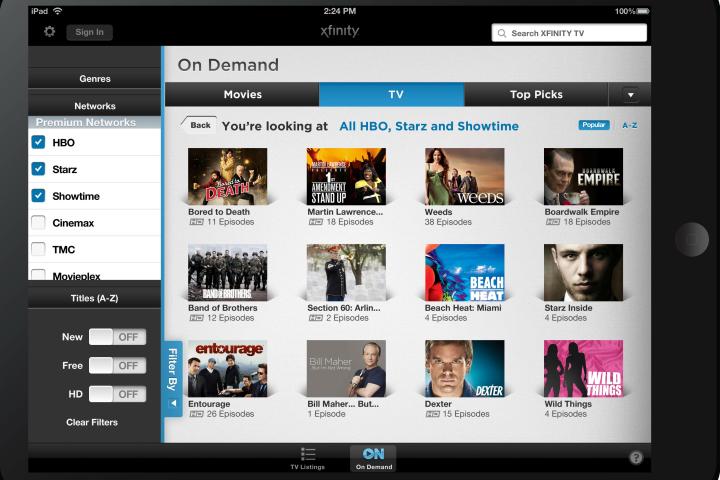
The saga of the increasingly-entangled realms of TV and streaming video gained another intriguing twist earlier this week. Comcast, the nation’s largest cable provider, announced it will soon allow its subscribers to watch up to 35 channels of live cable content from anywhere with a Wi-Fi connection via a smartphone or tablet. Reported by the Associated Press, the update will come to Comcast’s renamed XFINITY TV Go app for Android and iOS devices in the next few days, covering access to popular networks such as CNN, ESPN, FX, and Disney, as well as Comcast’s wide library of OnDemand content.
The announcement is a welcome shift in strategy for Comcast, which previously allowed users to access very limited content outside the home, from a PC only. In recent years, however, the rapidly shifting evolution of digital video content has led cable providers to look for innovative new ways to retain customers as viewers increasingly shift their habits towards mobile streaming.
Unlike DVR systems like DishNetwork’s SlingBox, or TiVO’s Roamio, Comcast’s newest service will stream content directly from the provider. Smaller competitors like Verizon’s FiOS already offer similar services, but this latest move by the gargantuan cable provider will bring the feature to an even broader audience.
As reported by the AP, a big reason for Comcast’s new strategy may be based on the Nielsen system’s recent decision to begin tallying online streaming via set-top boxes and mobile devices in 2014. Up to now, viewership stats from the gold standard of ratings have been restricted to TV viewing only, skewing the numbers for potential advertising dollars as a massive percentage of viewers shift their gaze towards streaming boxes and second screen devices. With the addition of online content to the pool, cable providers will have the ability to provide more of their content to mobile devices without risking cannibalization of their own ratings over standard cable viewing, and thus, keeping the river of cash from advertisers flowing.
While Nielsen has purportedly been considering adding online content to its rating system for the past few years, the recent monumental shift in viewing habits thanks to a multitude of set-top streaming devices and mobile apps; services like Netflix, Hulu, and Amazon Prime; and smaller upstart services like Aereo, have made the standard system grossly inaccurate, forcing the issue to a head.
Today’s news is just the latest tremor in what is becoming a major shake-up in strategy from cable providers across the country. As the standard paradigm continues to be influx due to new innovations from all sides, even the mighty lords of cable have been forced to change or die. And that’s good news for we mere mortals.


